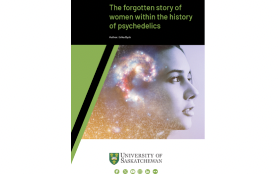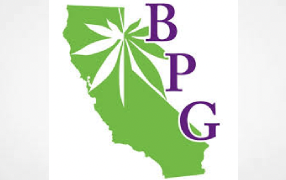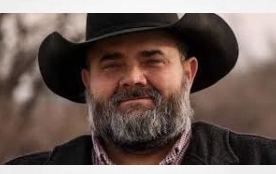Canada
Women are integral to the history of psychedelics; however, their contributions have often not figured as prominently in stories of daring experiments or discoveries made by charismatic mind explorers
On July 9, 2022, the world lost a psychedelic pioneer when Ann Shulgin died. An influential psychologist, and psychedelic therapist, born in New Zealand and anchored in California, Ann became a keystone to women working in this field.
She co-authored, with her chemist husband Alexander Shulgin, Pihkal (1990) and Tihkal (1997), which introduced readers to their shared love of psychedelic chemistry intertwined with psychology, representing the couple’s academic and personal interests. And in the 21st century, she remained a towering figure in this somewhat hidden but tightly connected scene, participating in the Women’s Visionary Council and carving out space for women’s contributions to psychedelic knowledge.
Uncovering women’s place within the history of psychedelics
In this article, I suggest that investigating women’s contributions is not simply a matter of adding women to this mix, but paying attention to this past helps to illustrate how diverse contributions have been valued in the psychedelic field.
Psychedelics in the form of plants and fungi have been used for millennia, but their applications have been far from universally accepted. Some of the plants used in psychedelic contexts have also been implicated in midwifery, including using plants as abortifacients. Women astutely handled such knowledge with care, often in secret, in an effort to avoid the moral and legal repercussions.
Women have also used psychedelics in ceremonies. Traditions vary as to whether women are permitted to guide a ceremony as shamans or curanderas, with some cultures prohibiting women from these roles. Despite differences in leadership, women have been integral to ceremonies, performing different, but nonetheless critical roles from harvesting and cleaning plants to preparing feasts, singing, protecting water, or other vital components that have been woven into ceremonies for hundreds, and in some cases thousands, of years.
The suppression of women throughout history
If we look to the history of psychedelics in a Western bio-medical context, women are similarly present yet often muted. The early history of psychedelics from its scientific heyday in the 1950s is filled with stories of psychedelic breakthroughs and discoveries, typically associated with men working as chemists or psychiatrists. The emphasis on male contributions is partly reflective of the historical context, where during this period, men tended to be the main income earners and married women were less often found working in labs.
But this image of the 1950s culture of medical research downplays the role of women and undermines some of the major contributions to psychedelic research that emerged because women, particularly wives, participated directly in the research environment.
Few were paid for their participation, and their names perhaps appropriately then do not appear on published papers, leading to an erasing of their contributions to history.
Women: The true early experimenters
Many of the well-known early experimenters had their first experiences with their wives or lovers, like Jean- Paul Sartre or Aldous Huxley. Some husbands even admitted that they were initially anxious about trying mind-altering substances, like mescaline or LSD, and wanted to embark on the experience with the person they trusted most.
Wives helped write up experiential reports, sometimes practically managing a typewriter, but more often, preparing the reports involved coaching these men in how to articulate an experience that routinely defied simple description or explanation. Today we might describe that process as part of the integration of the experience.
Amidst the resurgence of interest in psychedelics in the 21st century, the recognition of women in this field continues to lag behind men, but it is not just representation that is at stake. Paying attention to women’s participation also reveals different ways of working with psychedelics, and may even help to emphasize some of the significant contexts in which psychedelics have captured imaginations.
1ca50c96-b362-480d-8bf8-4f2c90515b73
The importance of showcasing women’s roles within the history of psychedelics
Over the past few years, I have been working with the Chacruna Institute for Psychedelic Plant Medicines to showcase the historical and contemporary contributions of women in this field. What began as a modest proposal to highlight a handful of women has blossomed into a deeper set of conversations about how women have participated as caregivers, patients, witnesses, at times victims, and even as psychonauts themselves.
In the mid-20th century, doctors’ wives were considered appendages to their husband’s careers. Wives played important but often invisible roles as listeners, recorders, interpreters, and sometimes later in more official roles as guides in experiments.
If one reads published papers, and especially dissertations from this period, you invariably encounter thanks to the wife, who sometimes literally typed the manuscript on an unforgiving typewriter but sometimes also hosted these events, including managing the guest list and inviting different appetites to the proverbial psychedelic table. Within the history of psychedelics, these domestic conveners played an important role in curating the dinner parties to include a more diverse set of people than you might otherwise find in the university laboratory.
Women like Maria Huxley (née Nys) introduced her husband Aldous to a number of her female friends who shared an interest in the occult and the paranormal. A few, like Eileen Garrett, made names for themselves as spiritual mediums, whose work with psychedelics furnished psychiatrists and philosophers with a new set of terminology to think about the unconscious mind.
Examining archival records to reveal the true history of psychedelic research
Archival records offer other clues about how women influenced psychedelic research in the 1950s. Prior to the digital age, psychedelic experiments using LSD and mescaline were recorded using pen, paper, and in some cases, typewriters. Each case or experiment relied upon observers to record the setting along with observations of the patient or research subject. Protocols varied, but in most clinical cases, a detailed “observers report” became standard practice.
These reports included information about doses, timing, reactions, and any other observations over the course of a session that typically included monitoring for 8–12 hours. For example, music would often be played during a session, and the patient or subject’s physical movements or responses to the music would be carefully timed and recorded.
These observers’ reports, which became standard practice at psychedelic research units throughout North America, are typically provided by a Mrs. so-and-so. Upon closer examination, those Mrs. so-and-sos were frequently the wives of some of the paid staff and in some cases, were former patients or subjects themselves. In all cases, these women had experience with LSD or mescaline and took notes during the sessions. And in some of the subsequent reports given by patients about their experience, these women are described as providing comfort to them during their sessions.
The following is an example of this kind of hands-on care for a patient in a psychedelic session. One patient was a woman treated in 1964 at a private hospital in Vancouver, Canada, that provided psychedelic therapies. In her autobiographical statement, she explained that she sought treatment for an obsessive-compulsive set of behaviours fixated on dirt and germs.
While the specifics of her case are not generalizable, the overarching structure of her case is quite typical in these reports and relates to each person’s seeking insight into their behaviours and looking to understand their addiction, trauma, obsession, and sexuality, etc. In her case, she was admitted to hospital on November 14, 1964, where she received 700 milligrams of mescaline, and was observed by three people – psychiatrist Dr. D.C. MacDonald, a self-trained therapist/guide Frank Ogden, and Mrs. Lillian Carter – a woman described simply as “observer.”
Carter is not included on the staff list, is not recorded in published reports or elsewhere in the historical record, and I cannot confirm that she ever received payment for her work – she may have been a volunteer. MacDonald, Ogden, and several others are named in other published reports, but Carter and other women like her who appear in the observer role do not make it into these official accounts.
Based on a reading of these records, in fact, it is difficult to determine what the observers did, or whether they did anything at all beyond silently observing the experiment, but based on the records we do have, most of these caring and observing roles were played by women.
The role of these carers of observers is not described in any detail in the protocols or in the published reports that examined the results. Yet, in my review of over 500 case files from one hospital, it is clear that women performed these roles. In the case above, “Mrs. Carter” appears in over a dozen cases, including as a subject herself. Unfortunately, her own case file is particularly sparse in detail, and doesn’t offer much insight into how she came to play this role.
But patients in this facility referred to her as a caregiver. One patient reported feeling frightened during her mescaline experience, then, “I would see Mrs. Carter and Mrs. Duke and at that time I found them friendly and it was as if they were trying to help me. I saw them bending over me and it seemed Mrs. Carter told me I was doing fine, and seeing them bent over me gave me a feeling of great solace.”
The ‘delicate feminine’
In another instance, Carter appeared to a patient, who described it like this: “At one point I noticed I was alone with Mrs. Carter and I asked where all the men were – I got scared – at that point I thought I must have been left alone with Mrs. Carter because of some ‘delicate feminine’ matter and I was furious – and when she said ‘You can tell me’ I thought for sure I’d done something awful but I didn’t know what it was.”
Another patient later wrote about his experience, explaining: “I was consciously sick for a great deal of the time, it seemed, and this dropped away gradually as I saw and learned something new. Mrs Carter played the vital role here, for she actually became all faces of me…”
All told, Carter appears in over a dozen accounts, sometimes without even without being identified on the accompanying staff or observer form. In many ways, she was rendered invisible in the official record, and only through the patients’ own writings we gain some glimpses of the work that she performed. Moreover, based on the patients’ accounts alone, her work seems to have had meaning for them, even when it is difficult to generalize or identify specific trends or interventions.
Mrs. Carter was not alone. Rita Hubbard, wife of the infamous Al Hubbard – who Michael Pollan describes as the “Johnny Appleseed of Acid,” appears in over 30 cases at this same hospital in Vancouver, Canada.
“I was consciously sick for a great deal of the time it seemed and this dropped away gradually as I saw and learned something new. Mrs Carter played the vital role here, for she actually became all faces of me…”
To read and download the full eBook ‘The forgotten story of women within the history of psychedelics’ here



















